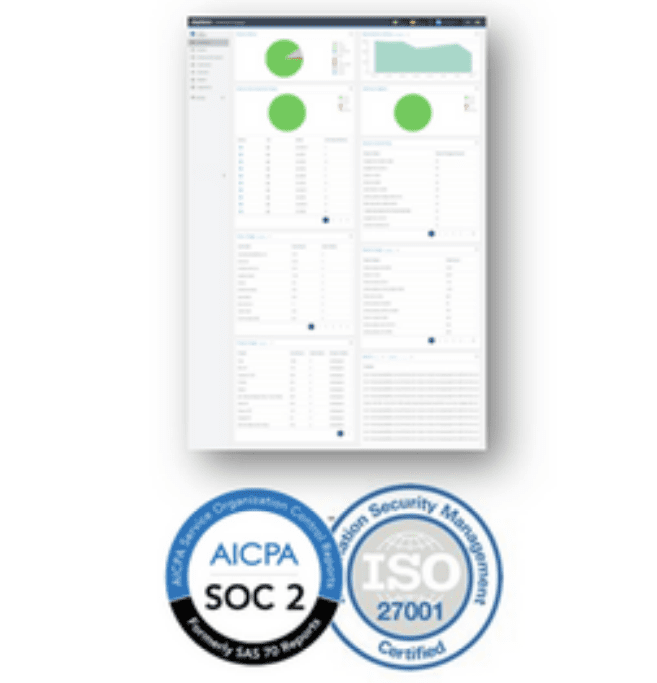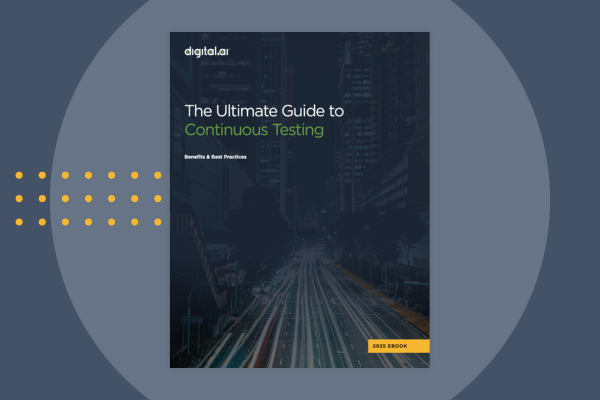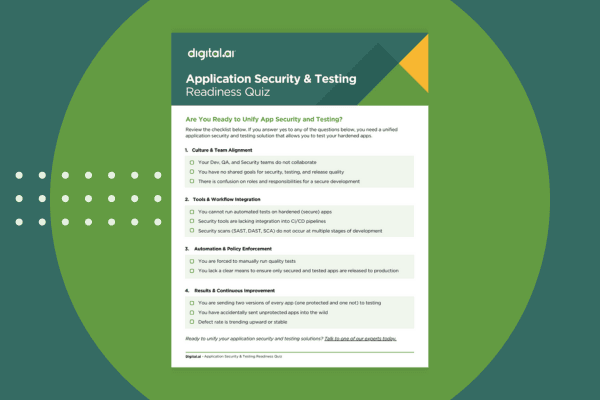Deliver high-quality applications with testing executed at speed and at scale.
Organizations continue to integrate continuous testing into their delivery pipelines as a natural progression of their Agile and DevOps adoptions in the pursuit of digital transformation. They are striving to release high-quality web and mobile apps faster. Test automation is the goal to reduce manual work and mediate software testing complexity. Customers demand flawlessly performing apps, and faster product releases, which is driving the change as organizations emphasize improving the user experience.
The expansion of digital transformation and the proliferation of AI-generated code is simultaneously challenging and enabling business execution. Testing teams are adopting processes and tools to integrate continuous testing into the entire SDLC to effectively manage the increase in developer output while identifying and eliminating defects during development. Bottlenecks in the process will lead to development and release setbacks.
As continuous testing methods continue to be adopted by organizations, choosing the right tool to coordinate across teams and align processes is essential. Teams need to eliminate repetitive manual work while enabling testers to become part of the test creation and editing process. Communication and collaboration need to be improved across the organization to help boost visibility and help stakeholders make data-driven decisions.
Challenges
- Shorter development cycles mean that testing bottlenecks can delay the time to market
- Fragmented testing environments and tools impact release quality and velocity Defects need to be discovered early in the development cycles
- Test coverage must be maintained in the face of changing requirements
- Defects need to be discovered early in the development cycles
- Communication between stakeholders and testing teams needs to be open and consistent
The latest Continuous Testing features and functionality aim to save time and increase quality by using AI to simplify test creation and development and generate analytic insights. The intended outcome of this development is to improve collaboration and eliminate repetitive manual tasks while improving decision-making with actionable data.
Digital.ai Continuous Testing takes a Shift-Left approach to security, automated testing, test development, management, and analytics. The result is a solution that connects software development and delivery efforts to security needs and business outcomes.
Deliver high-quality applications with testing executed at speed and at scale.
Digital.ai Continuous Testing is a manual and automated testing solution with capabilities that cover functional, performance, and accessibility use cases. All testing including functional, performance, network, and accessibility, is executed simply, and the solution is easily scalable for faster feedback. Test generation using AI prompts further simplifies test creation for noncoding team members. Testing is executed via real devices in the cloud (on-premise, SaaS) which supports global teams across multiple regions. In case of test defects, test cases are self-healed using ML algorithms.
Cloud managers have oversight and visibility into test resources by distributing devices per team, project, and user.When combined with the AI-powered Continuous Testing Lens users can seamlessly collect, and analyze, standardized metrics to present actionable insights and root cause analysis.
When implemented Digital.ai Continuous Testing accelerates automation in testing cycles by performing large-scale test execution on multiple browsers and devices in parallel. The single solution also integrates mobile application security, including protections against reverse engineering into development pipelines. This allows teams to embed security early in the delivery process while applying automated functional, accessibility, and analyze performance.
This is aided by the increased interoperability with existing development tools and IDEs, testing frameworks, and CI environments. It adds up to better visibility and more effective communication between development and teams responsible for functional, performance, and accessibility testing.
The outcomes that Digital.ai Continuous Testing customers enjoy start with higher developer and testing team productivity and stronger security. Projects are effortlessly scalable, and the time, effort, and cost required to fix defects will be reduced. Testing cycles will run faster, shortening the time to market. The result is improved app quality, security, and user experience, leading to higher customer conversion rates and lower churn.

Key Benefits
Release high quality secure applications

- Continuously test secure automated functional performance and accessibility scenarios to meet increasing release demands.
- Test securely on a large matrix of real devices and browsers that include a variety of manufacturers operating systems and versions.
- Build, record, and generate test scenarios faster, to increase test coverage and give noncoders the ability to create automation tests.
Scale with the needs of your enterprise
- Test using the cloud to share devices and browsers across regions and give your teams secure access from anywhere in the world.
- Manage devices and browsers from a centralized hub that cloud managers use to update app and OS versions.
- Use an on-premise cloud protected by your security and firewalls or a SaaS cloud with ISO 27001 and Soc-2 protections to test securely.

Make data-driven decisions

- Access AI-Powered analytic rich dashboards to improve test automation and cloud management.
- Monitor and track licenses and device usage to boost productivity and improve cloud management.
- Correlate test results and analyze the impact of failed tests to prevent release risk and eliminate fragmentation
Key Capabilities
Automated app testing
Automate and streamline your app testing to increase your test velocity and release quality
Integrations
Integrate with your existing development tools, IDE’s, testing frameworks, and CI environments
Large-Scale Execution
Execute tests in parallel on multiple browsers and mobile devices all from one platform
Analytics
Leverage data-driven insights to improve efficiency, prioritization, and performance
Test Editor
Generate, edit, verify and manage tests from a shared database, without needing coding skills
Accessibility Testing
Stay compliant and deliver accessible website and application experiences for any user
Performance Testing
Simulate different servers, analyze device vitals, measure transactions, and speed index
Lab Management
Manage test projects, grant remote access, monitor execution progress, and share reports
The Digital.ai Difference
One platform that automates release pipelines and integrates complex toolchains. Unify app delivery, integrate existing tools & scale across any environment.
Automated mobile app testing and security designed to scale. Provide secure, high-quality apps with reduced risk through testing & threat monitoring insights.
Built-in AI, intelligence, compliance, and governance across all software delivery workflows. Centralize data, optimize processes, and gain augmented insights for faster, safer software delivery.
Digital.ai AI-powered DevSecOps platform

About Digital.ai
Digital.ai is an industry-leading technology company dedicated to helping Global 5000 enterprises automate software delivery workflows across complex technology environments. The company’s AI-powered DevSecOps platform automates software releases, improves mobile application testing and security, and provides insights across the software lifecycle. Digital.ai empowers large enterprises to embrace AI responsibly, reduce software-related risk, and amplify developer productivity to deliver innovations that drive business outcomes.
Additional information about Digital.ai can be found at digital.ai and on Twitter, LinkedIn and Facebook.
Learn more at Digital.ai Continuous Testing




